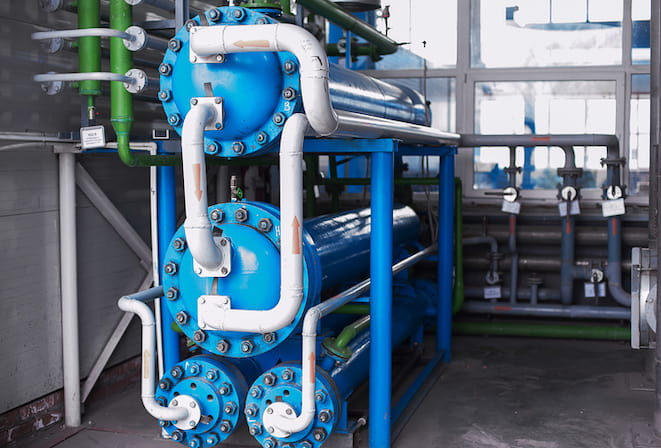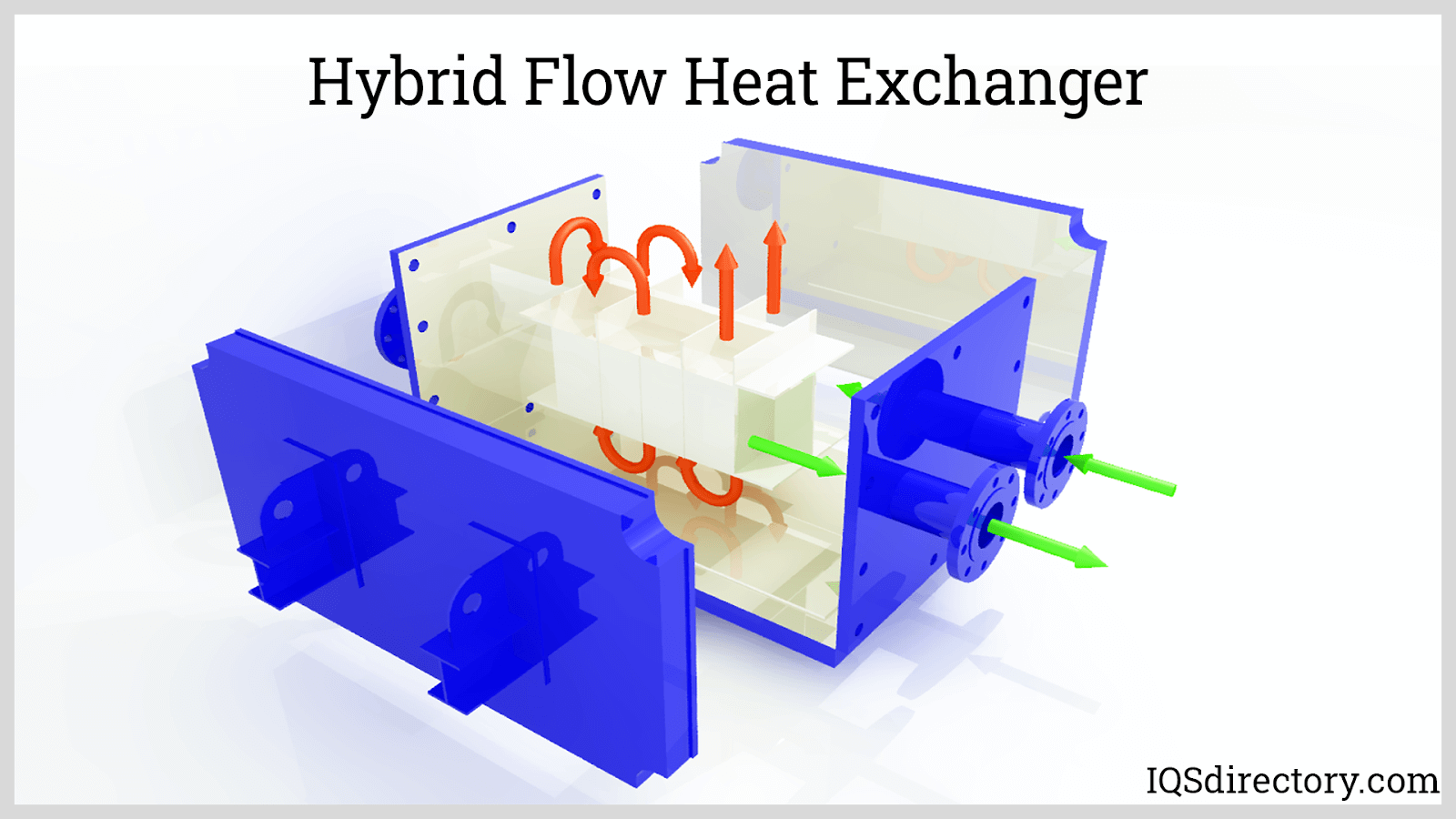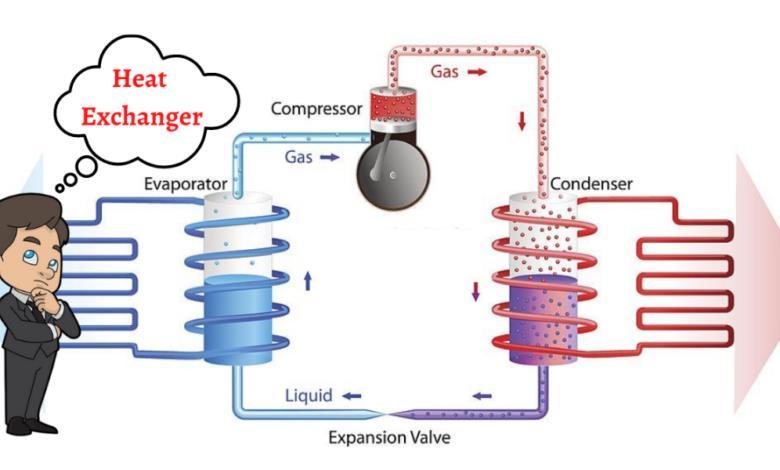How DVS Heat Transfer Systems Use Nanotechnology to Outperform Traditional Cooling Systems
The Role of Heat Transfer Solutions in Sustainable Energy Solutions for the Future
Heat transfer systems are crucial in the pursuit for sustainable energy services. They maximize thermal energy management, boosting the effectiveness of sustainable technologies. By using systems like transmission, radiation, and convection, these systems minimize power losses. Their duty in solar thermal and geothermal applications is especially substantial. As advancements emerge, the possibility for additional improvements raises vital inquiries regarding future energy approaches. What advancements will shape the landscape of sustainable power?
Understanding Heat Transfer Systems

The Significance of Thermal Energy Monitoring
Efficient thermal energy management is important for optimizing power performance and reducing waste in numerous systems. By controling temperature level and enhancing Heat transfer procedures, organizations can markedly lower energy usage and functional expenses. Efficient monitoring involves the application of sophisticated technologies and methods that check and regulate thermal problems within systems, making certain that energy sources are used efficiently. In enhancement, proper thermal power administration adds to lowering greenhouse gas emissions, aligning with worldwide sustainability objectives. It likewise boosts system integrity and efficiency, bring about enhanced product high quality and longer devices life expectancy. Ultimately, prioritizing thermal energy monitoring is an important action towards developing much more sustainable energy services and cultivating an accountable technique to energy consumption in commercial and residential contexts.
Applications of Heat Transfer in Renewable Power
While different renewable resource resources guarantee sustainability, the effective application of Heat transfer plays an essential role in their efficiency. In wind power systems, Heat transfer is utilized for turbine part air conditioning, improving efficiency and longevity. Geothermal energy counts on efficient Heat exchange between the earth's subsurface and the fluid distributing in the system, making the most of energy extraction. Biomass power procedures also benefit from Heat transfer, as it helps in transforming natural products right into functional fuel through pyrolysis and gasification. Furthermore, in hydropower, maintaining optimal temperature levels in storage tanks can enhance energy result. Each of these applications demonstrates the vital importance of Heat transfer systems in enhancing renewable resource innovations, inevitably adding to a more sustainable energy future.
Enhancing Solar Thermal Power Effectiveness
As solar thermal power systems remain to progress, enhancing their efficiency has become necessary for making the most of power output. Breakthroughs in Heat transfer technologies, such as enhanced thermal storage space materials and cutting-edge Heat exchangers, play a significant function in boosting performance. By using innovative materials that have remarkable thermal conductivity, systems can move and capture Heat a lot more properly. In addition, integrating radar that adhere to the sunlight's path assurances that collection agencies obtain optimal solar direct exposure throughout the day. Making use of nanotechnology in solar absorbers can even more increase energy absorption rates. Furthermore, integrating computerized control systems aids regulate temperature levels and manage power circulation effectively, bring about reduced losses and boosted general system efficiency. These enhancements pave the way for more lasting solar thermal power remedies in the future.
Geothermal Home Heating: A Lasting Remedy
Geothermal home heating provides a sensible option for lasting power, offering considerable environmental benefits via decreased greenhouse gas emissions. Its performance and cost-effectiveness make it an appealing option to standard heater. Obstacles associated to implementation needs to be addressed to optimize its potential impact.
Ecological Advantages of Geothermal
Conventional home heating methods add substantially to greenhouse gas exhausts, geothermal home heating offers a compelling option that decreases environmental effect. By utilizing the Planet's internal Heat, geothermal systems make use of a renewable energy resource, significantly minimizing reliance on fossil fuels. This method creates very little carbon exhausts, making it a cleaner choice for residential and business home heating. Furthermore, geothermal systems promote power performance, as they call for much less energy contrasted to traditional home heating systems. DVS Heat Transfer Systems. The use of geothermal power additionally assists in lowering air contamination, enhancing local air quality and public health. As a sustainable option, geothermal heating sustains environment modification reduction efforts, positioning itself as an essential component in the change in the direction of a greener future
Performance and Cost-Effectiveness
Just how does geothermal home heating gauge up in regards to performance and cost-effectiveness contrasted to typical heater? Geothermal home heating shows remarkable effectiveness, commonly accomplishing a coefficient of efficiency (POLICE OFFICER) of 3 to 5, indicating it creates three to 5 devices of Heat for every single device of power eaten. This effectiveness converts into reduced operating expense, especially in areas with secure geothermal resources. First installment expenses can be greater than standard systems; nevertheless, long-term financial savings on energy bills and lowered maintenance expenses can counter these in advance investments. In addition, many governments incentivize geothermal systems via refunds and tax obligation credit ratings, boosting their cost-effectiveness. Generally, geothermal heating becomes a lasting and economically viable option to more standard heating options.
Execution Difficulties and Solutions
Countless obstacles can hamper the widespread application of geothermal heating systems, regardless of their clear advantages as a sustainable power service. High first installation costs often discourage capitalists and property owners, making financing a considerable obstacle. Furthermore, the geographical limitations of suitable geothermal sites restrict access in certain regions. Regional regulations and permitting procedures can additionally complicate project advancement, leading to hold-ups. Public recognition and understanding of geothermal systems remain low, impeding approval. To attend to these obstacles, targeted education campaigns can boost public knowledge, while government incentives could minimize monetary worries. Collaborating with local authorities to improve policies may help with smoother job authorizations, eventually advertising the adoption of geothermal heating as a viable, sustainable energy option.
Developments in Heat Transfer Technologies
Developments in Heat transfer technologies play a vital duty in boosting power effectiveness and sustainability. Advanced Heat exchangers and stage adjustment products go to the forefront of these advancements, using considerable improvements in thermal management. These modern technologies not just enhance energy use however likewise contribute to reducing environmental influence in numerous applications.
Advanced Heat Exchangers
Advanced Heat exchangers play an essential duty in improving energy performance across various applications in sustainable power services. These tools assist in the transfer of Heat between 2 or even more fluids, substantially minimizing energy intake in procedures such as industrial home heating, cooling, and power generation. Technologies in materials and layout, such as using nanofluids and compact setups, have brought about improved thermal efficiency and link reduced size needs. Furthermore, developments in electronic monitoring and control systems enable optimized operation, further raising efficiency. By reducing waste Heat and making best use of energy healing, advanced Heat exchangers contribute to reduce carbon impacts and support the shift toward eco-friendly technologies. Their continued growth is important for achieving international energy sustainability goals.
Stage Adjustment Materials
The integration of phase adjustment top article products (PCMs) into Heat transfer modern technologies stands for a considerable innovation in power management and effectiveness. PCMs soak up and launch thermal energy during their stage modifications, making it possible for effective temperature guideline in structure products and energy systems. By keeping excess Heat throughout top durations and releasing it when demand increases, PCMs add to load shifting and energy preservation - DVS Heat Transfer Systems. This capability enhances the performance of renewable energy systems, particularly in solar thermal applications. Additionally, PCMs can enhance the thermal convenience of interior environments, minimizing reliance on traditional heating and cooling techniques. As developments in PCM solutions remain to arise, their function in sustainable energy solutions is poised to grow, offering promising methods for future study and application

Future Leads for Heat Transfer in Sustainable Power
As the need for lasting energy remedies continues to climb, the role of Heat transfer systems is ending up being significantly vital in forming future innovations. Advancements in materials and layouts are anticipated to improve performance in Heat transfer, lowering energy losses in various applications. The integration of innovative thermal storage space systems, such as phase change materials and thermochemical storage, will certainly allow much better monitoring of power sources. Research into nanofluids and biomimetic Heat exchangers may even more optimize thermal performance. Additionally, the fostering of wise innovations will certainly permit real-time tracking and adaptive control of Heat transfer processes. These improvements are poised to greatly add to the general performance and sustainability of power systems, leading the way for a more energy-efficient future.
Frequently Asked Inquiries
Just How Can Individuals Execute Heat Transfer Systems in your home?

Individuals can execute Heat transfer systems in the house by setting up energy-efficient appliances, making use of radiant heating, and maximizing insulation. These steps enhance power effectiveness, reduce prices, and promote lasting practices in here are the findings property environments.

What Are the Prices Connected With Installing Heat Transfer Systems?
The costs associated with installing Heat transfer systems differ extensively, usually encompassing tools, installment labor, and upkeep. Variables such as system kind, home dimension, and local policies greatly influence the general expense included.
Are There Federal Government Rewards for Heat Transfer System Installations?
Government motivations for Heat transfer system setups vary by area and can consist of tax credit reports, refunds, and grants. These economic benefits intend to motivate fostering, eventually advertising power effectiveness and reducing ecological effect within areas.
Exactly How Do Heat Transfer Solutions Impact Power Bills?
Heat transfer systems especially influence energy costs by enhancing power effectiveness. By boosting the transfer of Heat, these systems lower energy intake, resulting in lower utility prices and producing a more sustainable method to energy management.
What Maintenance Is Needed for Heat Transfer Equipments?
Maintenance for Heat transfer systems includes normal evaluations, cleansing of parts, checking fluid degrees, guaranteeing correct insulation, and replacing worn parts. These jobs aid maintain performance, protect against break downs, and lengthen the system's functional lifespan.
These systems promote the movement of thermal power from one tool to one more, enabling the transfer of Heat for cooling, power, or home heating generation functions. Geothermal power relies on efficient Heat exchange between the planet's subsurface and the liquid flowing in the system, optimizing power extraction. Furthermore, geothermal systems promote energy efficiency, as they require less energy compared to standard home heating systems. Advanced Heat exchangers play a vital function in boosting power effectiveness across numerous applications in lasting power options. Heat transfer systems especially affect power expenses by enhancing energy efficiency.